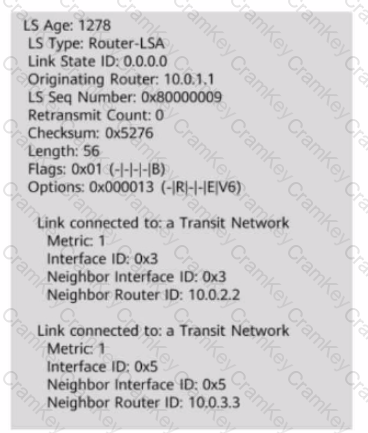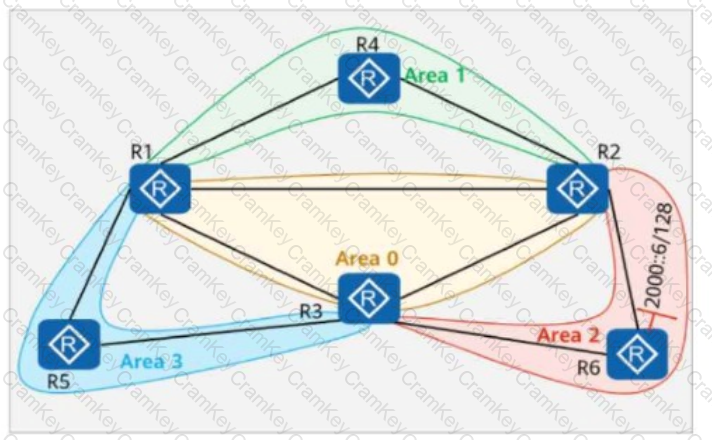| Exam Name: | HCIP-Datacom-Advanced Routing & Switching Technology V1.0 | ||
| Exam Code: | H12-831_V1.0 Dumps | ||
| Vendor: | Huawei | Certification: | HCIP-Datacom |
| Questions: | 156 Q&A's | Shared By: | aayat |
The figure shows the Router-LSA generated by a router. Which of the following statements are true based on the LSA?

On a broadcast network, routers (including non-DIS routers) of the same level on a network segment can establish neighbor relationships. In the implementation of BFD for IS-IS, however, BFD sessions are established only between a DIS and non-DIS routers, not between non-DIS routers.
On the OSPFv3 network shown in the figure:
Area 1 is a stub area, Area 2 is a common area, and Area 3 is an NSSA (Not-So-Stubby Area).
The IPv6 address of Loopback0 on R6 is 2000::6/128.
The router ID of each router is 10.0.X.X, where X is the router number.
The stub no-summary command is configured in Area 1 on R2.
Which of the following statements is true?

On the OSPF network shown in the figure, R1 and R2 use OSPF to communicate with each other through Loopback0. In addition:
MPLS LDP is enabled on R1 and R2.
The LDP transport address is the IP address of Loopback0.
A network engineer finds that an LDP session cannot be established between R1 and R2 and runs diagnostic commands (shown in the figure) to locate the fault.
Given this, which of the following are possible causes of the fault?

Options: